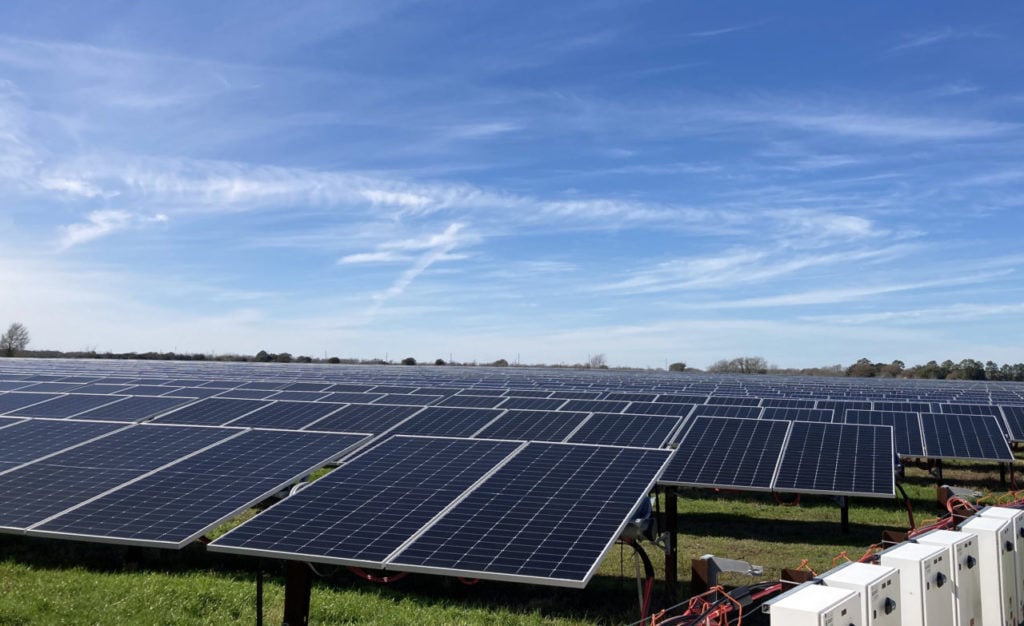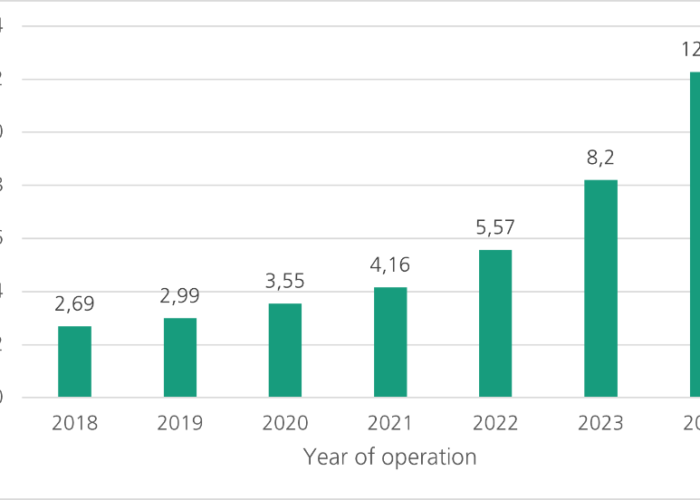
Over 6.5GW of US solar PV capacity will be totally obscured from sunlight by today’s full solar eclipse, according to data from the Energy Information Administration (EIA).
As the eclipse passes over the US later this afternoon, solar installations will experience varying levels of limited sunlight, the EIA said. In total, around 84.8GW of capacity will be totally or partially affected across the country.
Try Premium for just $1
- Full premium access for the first month at only $1
- Converts to an annual rate after 30 days unless cancelled
- Cancel anytime during the trial period
Premium Benefits
- Expert industry analysis and interviews
- Digital access to PV Tech Power journal
- Exclusive event discounts
Or get the full Premium subscription right away
Or continue reading this article for free
The “path of totality” – where the moon will completely obscure the sun – will affect installations from Texas to Maine and many states in between (as visible in the graph below). Capacity within the path of totality will be in the dark for around four minutes but could experience limited sunlight for over two hours as the partial eclipse moves across the country.

Grid impacts for solar heavyweights
US grid operators have prepared for the eclipse in advance, but it will still significantly impact parts of the country.
The EIA said that Texas, California and Florida – the three states which installed the most solar PV capacity in 2023 – will be the most affected by the eclipse.
Texas will lose the most capacity of any state in the country, as the majority of the state will lose between 90-99% of its output. The Electric Reliability Council Of Texas (ERCOT) has said that it expects solar generation to dip by as much as 92% at the peak of the eclipse, and to fall from over 10GW to around 1.3GW for at least two hours.
Texas is home to several large utility-scale solar projects, many of which have recently come online. In addition to 200MW and 297MW projects from Leeward Renewable Energy and Enel North America, respectively, 2024 has already seen Intersect Power bring its mammoth 828MWp Lumina project online in Texas.
Despite experiencing only 40–59% partial sunlight reduction, California will be the state most severely affected by the eclipse. “The state’s significant use of utility-scale and small-scale solar capacity makes the eclipse’s impact more significant”, the EIA said. California is by far the largest solar market in the US by total capacity and has a huge distributed, rooftop solar generation segment. These assets, which the grid operator does not manage, will result in greater demand on the electricity grid when they stop producing electricity, at a time when the grid is already rebalancing to account for significantly less PV capacity.
As the eclipse passes over Florida, “solar generation is likely to be the second-leading energy source on the system and account for about 20% of the state’s total generation”, the EIA said.
It continued, adding that PV is the “largest source of midday generation in California” and the second-largest in Texas and Florida.
To counter the eclipse’s effects, grid operators in the US will turn to other power generation resources to offset the loss of utility-scale solar generation. They will also use energy storage assets to deploy excess renewable energy when the moon’s shadow passes over solar installations – according to the EIA the US currently has 15.4GW of deployed battery storage.
Since the last full solar eclipse in 2017, the US has massively expanded both is solar PV and battery storage deployments. The EIA said that around 100GW of distributed and utility-scale solar PV has been added to the US grid since 2017, and around 15GW of battery storage.
Jesse Tippett, VP of power marketing and origination at Adapture Renewables said: “Events like solar eclipses underscore the importance of a diversified energy portfolio in addition to proper planning and management to maintain grid stability during these periodic disruptions. The integration of energy storage solutions, such as batteries, provides a buffer to store excess energy generated before the eclipse and release it when solar output decreases, ensuring continuous power supply during the event.”






